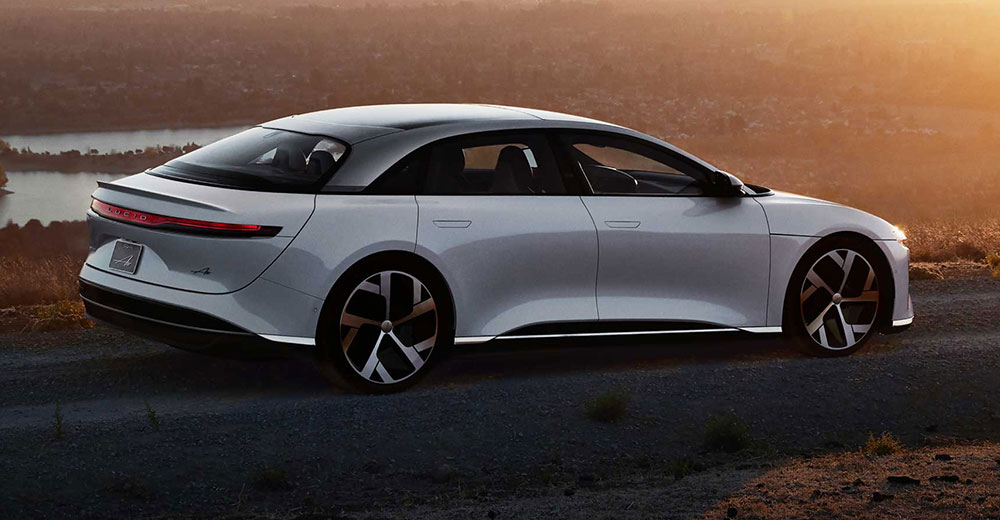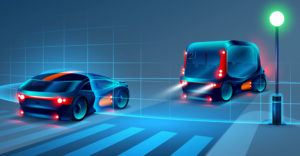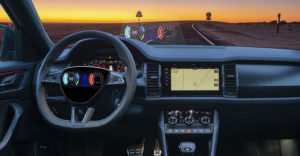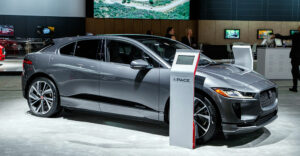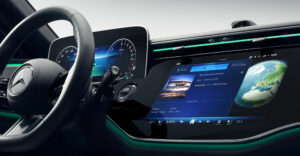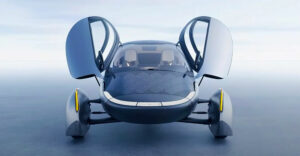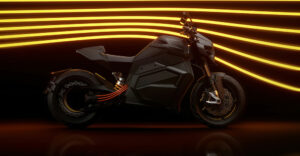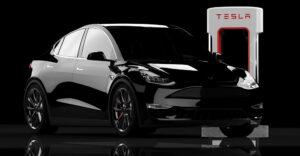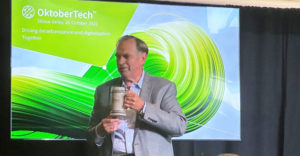Last week I listened to a podcast from Lucid Motors SVP Mike Bell (ex-Apple, ex-Rivian) on what makes the Lucid Air and the coming Lucid SUV code-named Gravity, due in 2024, so very different from every other car on the road, including Tesla.
Given Tesla was heavily influenced by Apple, as well, it will be interesting to see the differences Apple brings to this market when it finally announces its electric car.
The direction of these three companies appears to be in lockstep. It’s a shift from the traditional priorities of the old car manufacturers to a model that is more consistent with a tech firm. Car companies like Lucid and Tesla are more like Apple than they are like GM or Ford — which I think will eventually become a problem for GM and Ford.
I’ve also had updated briefings from Nvidia and Qualcomm on how they are dealing with autonomous driving in what could be a complementary approach for next-generation EVs.
Let’s talk about the future of electric cars, and we’ll close with my product of the week: an update on the Bartesian robotic bartender by, no kidding, Black+Decker.
Nvidia and Qualcomm Vehicle Tech
Nvidia’s Drive platform is used heavily in Lucid vehicles. It’s a comprehensive group of offerings that covers the autonomous car technology stack from conception and simulation to training to inference in the cars. Much of the strength, however, is in Nvidia’s Omniverse simulation capability, which is used widely in the automotive industry.
Qualcomm is focused more on cost-reducing the car side of this equation with compelling in-car technology that, on paper, is both cheaper and better than the other alternatives.
Given car companies are laser-focused on margins, you can see a world emerging where Nvidia may own much of the backend and control structure for autonomous cars and where Qualcomm could be present in most of the cars with its related self-driving capabilities. Qualcomm has demonstrated that its ability to keep smartphone costs down can translate into in-car solutions that can do much the same thing.
An increasingly possible future is where Nvidia provides much of the autonomous car backend while Qualcomm provides the multilayered computer vision technology in the vehicle.
Car and Driver Interaction
I was driving behind a Lucid car (pictured above) last week and must admit I found the car fascinating to look at. It really isn’t like any other car on the road. Performance specs and price are both surprising.
On performance, they provide down to a 2.5 second 0 to 60 acceleration time, up to 1,111 HP, up to 168 mph, and up to 520 miles of range in what is class-leading performance at the moment. But that performance will cost you close to $200K.
Then again, you can argue you are basically getting four cars for the price of one: a sports car, a family car, an off-road car, and a hauler (it has a massive amount of luggage space), all in one vehicle.
Lucid also showcases a change in thinking regarding the interaction between the car and its driver. Up until now, the driver has had to learn how to operate the car. Every car is different enough that most drivers may never learn how to use all the features. For instance, I’ve never been able to use my car’s self-parking capability successfully.
The Lucid model learns how to work with you, learns your preferences, and this data could be transferred from car to car so that you never again face the issue of being unable to properly use a feature you’ve purchased.
After-Purchase Upgrades
Lucid goes further than most to present a solution that is not only software-defined but potentially easier to update and upgrade over time, which will keep the cars in service longer than otherwise would be the case.
I’ve become rather frustrated with the more traditional car companies because you can almost bet that right after you buy a new car, they’ll do an upgrade that can’t be retrofitted, and you would have gotten it had you known it was coming.
For example, a few years back, I bought a Mercedes. Sometime between when I ordered the car and it was delivered, they put one of the features I’d ordered into another package that wasn’t available when I ordered my car and, because I hadn’t selected that bundle (again, it wasn’t even available at the time I ordered), they deleted the feature from the car.
The only way I could get it back was to pay three times what it had cost prior to that happening. This massive cost increase was because it was far more expensive to add that feature once the car was built.
Lucid and Tesla have both demonstrated they can do a far better job of providing after-purchase upgrades to their cars.
Related: Tesla Models Still Dominate Market Despite Musk’s Twitter Turmoil
As the industry considers the concept of cars-as-a-service, this ability to change a car’s configuration after it leaves the factory opens the door to not only a stronger used car opportunity for dealers but a far longer, happier relationship with the cars we end up buying.
Rather than replacing a perfectly good car after three years because it had become outdated, imagine updating the vehicle, so it’s nearly identical to a new one.
Lucid’s technology-centric software-focused approach also means many of these upgrades may come as part of a service much like some of the more interesting improvements to Tesla cars over the years. Tesla remains one of the few car companies where drivers look forward to software updates because Tesla builds in pleasant surprises, and Lucid is looking to outdo Tesla in this regard.
Part of why Lucid may be able to outdo Tesla is its use of Nvidia Drive, which remains a unique way that smaller car companies can match or exceed the capabilities of the larger firms by utilizing Nvidia’s extensive resources. It really is a game-changer.
Wrapping Up
As we move to the middle of the decade, our car experiences will be changing a great deal, becoming not only more customizable to the buyer but auto-adapting to that buyer post-sale to provide a level of personalized experience that hasn’t been seen in the tech market, let alone in the automotive market.
Once this is done, the technology market may have to pick up from some of the advances of the automotive industry to better compete in their segment because this concept of a product adapting itself to the user’s unique needs is a competitive revolution.
It’s hard to see how any customer, when given the choice, would ever opt for the old way of forced learning and lack of flexibility in the increasingly smarter personal technology, appliances, and vehicles they buy.
Companies like Lucid, Rivian, Tesla, Nvidia, and Qualcomm are driving the automotive market kicking and screaming into a future that is far more responsive to the needs of their buyers. That’s good news for our purchasing future, though likely not until the second half of the decade.

The ‘bev’ by Black+Decker
We were one of the first owners of the Bartesian robotic bartender, and we’ve enjoyed the product for several years since it came out.
However, there were annoyances that revolved around how the alcohol was retained in the device and the pain of filling it with water which often got spilled. We left one of the alcohol bottles in place without cleaning them for too long, and it got stuck. So, we went looking for a replacement only to discover that Black+Decker has created a newer version of the Bartesian called bev (small b), and it is awesome!
Let’s start off with the fact that with the old Bartesian, we had to swap out the rum and gin bottles when making drinks because it only held four types of booze. The new version holds five different bottles, and it uses the bottles the alcohol comes in, so you no longer have to clean the bottles; you just toss them out when they are empty. In addition, it provides a sixth bottle for water so that you can fill it easily under the tap (don’t try to fill it from the refrigerator; you’ll get water all over the floor).
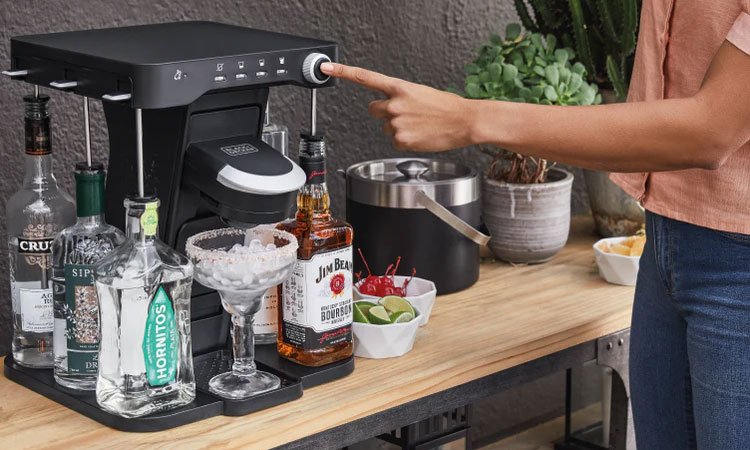
The ‘bev’ on-demand cocktail maker (Image Credit: Bartesian)
The unit has lights under the bottles, which light up as the drinks are being made or can cycle as it sits unused, making for a rather impressive presentation in your kitchen or bar. While the old Bartesian had a display that would walk you through making a drink, the bev has five buttons. The first four are for drink size, and the last starts the process of making the drink which is much faster and more fun to watch.
The bev uses the same pods as the old Bartesian but lacks a water chiller, so you will need to supply the ice. But the result is better looking, and far less messy (the old Bartesian would leak from time to time when filling), and so far, it has worked flawlessly.
On a hot day, and we are getting a lot of those, a cold rum punch is a nice way to end the day; and on weekends sitting outside with a chilled cocktail helps make it all worthwhile.
Priced at around $300, the new bev by Black+Decker is my product of the week. Cheers!

